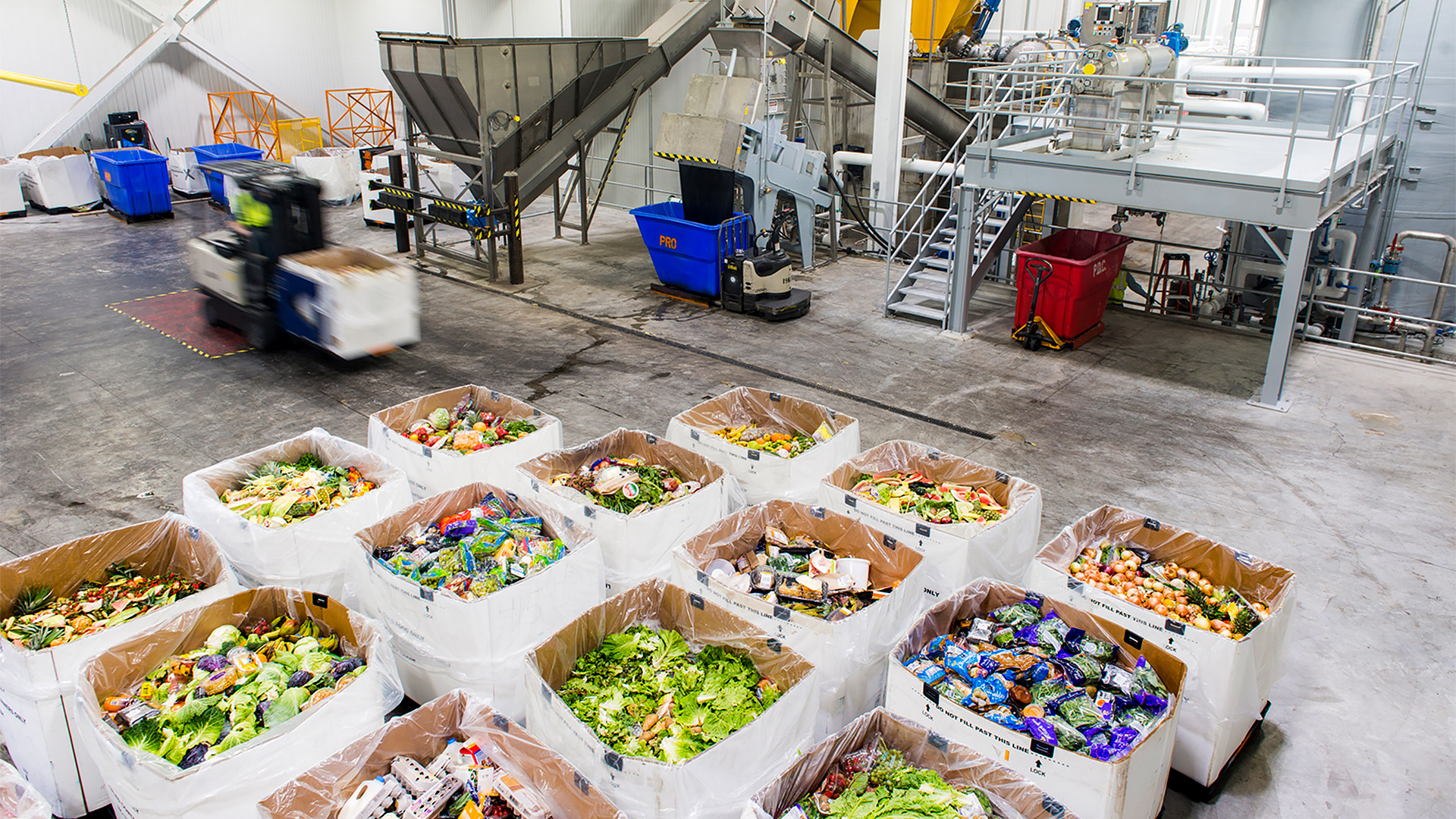“We need to handle this waste somehow.”
Meltem Urgun Demirtas
For companies interested in anaerobic digestion, however, producing methane is the goal. Because these facilities are sealed up, the mixture of methane and carbon dioxide produced by microbes, called biogas, can be captured and purified into biomethane, which can be used as a replacement for natural gas.
Some producers use this biomethane (also called renewable natural gas) or the unpurified biogas on-site, burning it to power their facilities. Others sell it to utilities, so it’s injected into existing natural-gas pipelines and used to generate electricity in power plants, or used in homes for heating or cooking.
On the whole, anaerobic digestion could provide a climate benefit, but exactly how much the process reduces emissions will depend a lot on the details, says Troy Hawkins, a researcher at Argonne National Laboratory who studies the environmental effects of energy systems.

BEN GEBO/DIVERT
Divert works with over 5,000 retail stores across the US to gather food waste and process it using anaerobic digestion. The company currently operates 10 digester sites in the US and uses tracking systems to help understand why certain food ends up getting wasted in the first place, Begin adds.
Deploying anaerobic digesters isn’t cheap: a full-size facility can cost tens or hundreds of millions of dollars. Designing new facilities can also take time, because most are customized for particular processing tasks. An on-site facility for an ice cream factory might look different from one that can accept everything from grocery store waste like expired frozen pizzas and old apples to used cooking oils from restaurants, McKiernan says.
Over 11,000 additional sites in the US are ripe for deploying anaerobic digesters, from wastewater facilities to food waste sites, according to a 2014 report from US federal agencies. If all those facilities were built, they could generate enough energy to power 3 million homes. The American Biogas Council, an industry trade group, puts the number at 15,000 sites, which would require about $45 billion to build altogether.
It won’t be cheap and it won’t be quick, but anaerobic digesters could be a significant destination for food waste in the future, helping to turn one person’s table scraps into another person’s energy.

